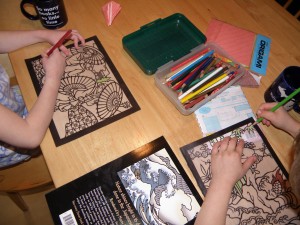I am in the process of writing curriculum to go with my chapter book, Hanna, Homeschooler. (If you’d like to be notified when it’s available, please join my email list.) In the process, I got thinking about what made our early homeschooling years work. Here in no particular order are the ingredients that made our homeschooling recipe sweet, spicy, comforting, complex, and zesty!
#1: LARGE Paper
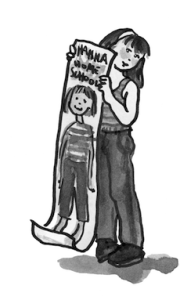 For younger children, very LARGE sheets of paper are great! I recommend buying a roll of butcher paper like Hanna has. It can be cut in shorter lengths to serve as a large canvas, or longer pieces to create timelines, maps, full body outlines, and anything else you might think of.
For younger children, very LARGE sheets of paper are great! I recommend buying a roll of butcher paper like Hanna has. It can be cut in shorter lengths to serve as a large canvas, or longer pieces to create timelines, maps, full body outlines, and anything else you might think of.
#2: A Digital Camera
Digital cameras saved my homeschooling life! My son was born at the end of the film camera era; my daughter was fully of the digital world. I definitely saw the difference once we didn’t have to pay to take photos. As a homeschooling friend said to me, “the digital camera is your friend.” Take pictures of everything you do and notice during the day. It costs nothing, and in a pinch you can use the pictures for projects.
#3: Marker Set
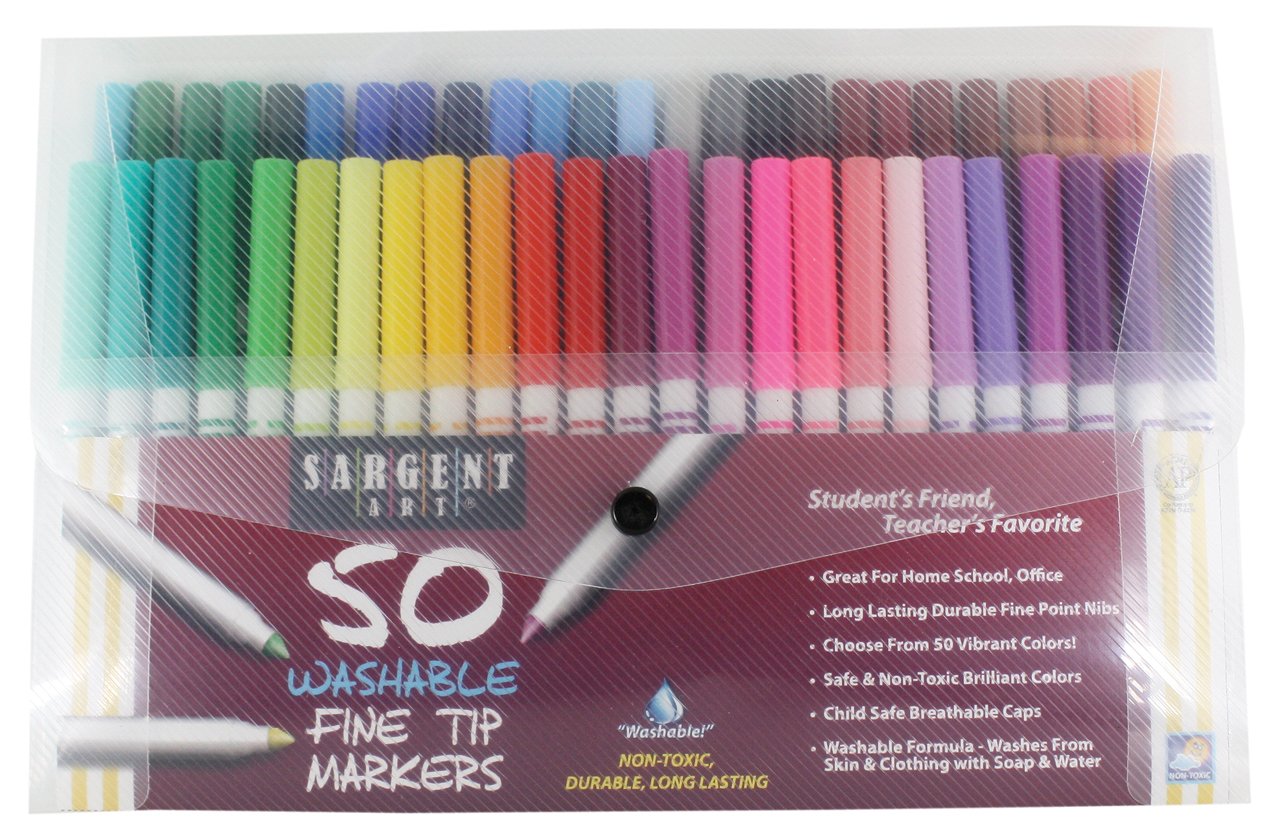 An enormous set of every color of marker. You can buy such things online for quite cheap, and the array of colors can be very inspiring to children. By the way: don’t leave this out where your kids can access it anytime. Save it somewhere not visible so that when it comes out, it’s special.
An enormous set of every color of marker. You can buy such things online for quite cheap, and the array of colors can be very inspiring to children. By the way: don’t leave this out where your kids can access it anytime. Save it somewhere not visible so that when it comes out, it’s special.
#4: Notebooks
Notebooks. Our favorites were homemade using a friend’s spiral binder. We made them for specific purposes, such as “Science Notebook,” “Japanese Notebook,” and even “Sierra Notebook” for when we went to the mountains. Unless your child really needs lines, these should have blank paper and should be bound so they can easily be drawn in under any conditions. (A hardcover book-style binding is rather inconvenient in the woods!)
#5: The Internet
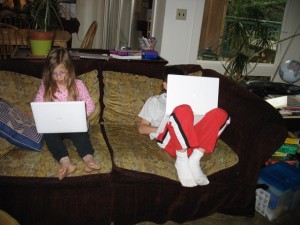 Even if you don’t want your kids to play on computers, start them early learning that it’s a valuable tool. (Our family had a no-screen policy in our house when our kids were little and continued with a limited-screen policy for a few more years.) “I don’t know–let’s look it up” is the most empowering thing a parent can say to a child. These days it doesn’t take a trip to the library (unless that’s where you get your Internet access). Starting very early, make sure to talk to them about how to decide whether to trust Internet sources.
Even if you don’t want your kids to play on computers, start them early learning that it’s a valuable tool. (Our family had a no-screen policy in our house when our kids were little and continued with a limited-screen policy for a few more years.) “I don’t know–let’s look it up” is the most empowering thing a parent can say to a child. These days it doesn’t take a trip to the library (unless that’s where you get your Internet access). Starting very early, make sure to talk to them about how to decide whether to trust Internet sources.
#6: A Library Card
A great as electronic sources are, kids live in the tactile world. A real book that they can pick up anytime is much more important to have in your house than ten e-books on your tablet. Check out lots of books, even ones they didn’t choose. Unschoolers talk about “strewing”—leaving things around for your kids to discover. If you can go to the library without them, get books on subjects you think they’ll be interested in and “strew” them around the house.
#7: Craft Supplies
These should be separated into two categories. You should always have craft supplies within reach that your children can access at will. If this means a messier house than you’d like, well, just remember that one day your kids will be teens and you will wish they’d be making messes at home more often! The other batch of supplies should be kept out of reach. These are things you should save for those “I’m bored” moments, or times when you are feeling tired, sad, cranky, or any other emotion that makes you a less-than-stellar homeschooler that day.
#8: Friends
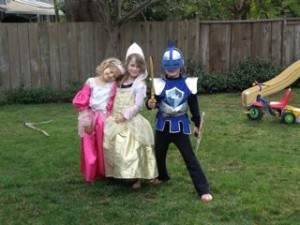 When I started homeschooling my daughter, we were in a crisis. We had invested so much in trying to get school to work for her. We didn’t know a single homeschooler. And because of our daughter’s special needs, we didn’t really have school friends with kids her age, either. Our first few months of homeschooling were pretty darn awful. We sat around being angry at each other and lonely for friends. Finally, we joined a homeschool program to meet people. If you’re more outgoing, you might not need a formal group, but introverted me and my unusual daughter needed this. It changed our lives to be part of a group that offered both structured and unstructured time, and through this group we finally made friends.
When I started homeschooling my daughter, we were in a crisis. We had invested so much in trying to get school to work for her. We didn’t know a single homeschooler. And because of our daughter’s special needs, we didn’t really have school friends with kids her age, either. Our first few months of homeschooling were pretty darn awful. We sat around being angry at each other and lonely for friends. Finally, we joined a homeschool program to meet people. If you’re more outgoing, you might not need a formal group, but introverted me and my unusual daughter needed this. It changed our lives to be part of a group that offered both structured and unstructured time, and through this group we finally made friends.
